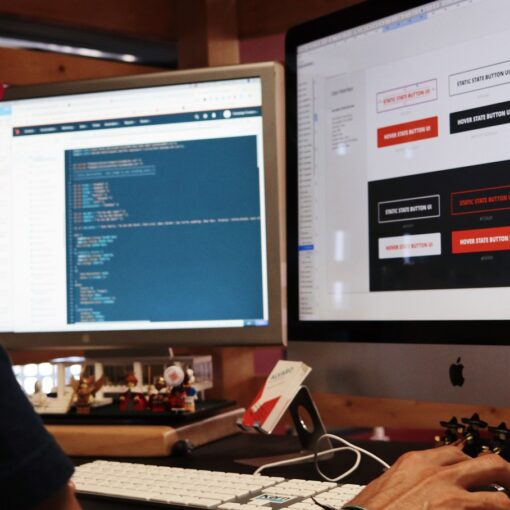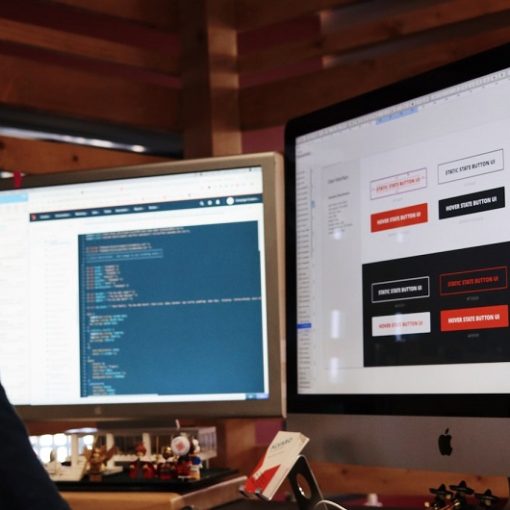Almost anyone can create a website, write an article, or claim they’re a designer with basic skills and training; they don’t need special job training or a specific career. However, an efficient page can make all the difference. Most users are looking for a fast, easy-to-use, and somewhat entertaining experience. Every second matters and any delays, inconveniences, or design flaws can turn away potential or existing customers.
It’s important to find a perfect balance between a web page’s design appearance and functionality. A webpage with an amazing theme, fun images, and impressive visuals that takes forever to load due to errors with JavaScript won’t keep visitors engaged for long. The same is true for the inverse situation, where the code might be fantastic but the design is unappealing.
To ensure a top-notch experience, you have to maintain stellar communication between the web designers and developers in terms of ideas and for every project. It’s also essential to clarify what your company, and its clients, want with great detail. The more information, the better. This article takes a look at both sides of the coin and what each brings to the table for website optimization.
Web Design and Development
Before jumping into how you can optimize your company website, there are a few things you should know about the differences between web design and development. These are both essential components for companies and individuals that create websites tailored for a specific audience on the internet.
Web Designers
Web design refers to almost everything related to graphic design on a page that interacts directly with a user. A web designer, in a nutshell, is the artist and creative mind behind a website that can feel free, to a degree, about what they create and modify. In web design, they focus almost entirely on the user visual experience. In terms of optimization, these professionals add their skills to the mix by enticing users, keeping them interested for more than a few minutes, and ensuring a seamless transition between sections.

Website design involves multiple variables, of course, like some of the following:
- Layout
- Theme
- Usability
- Imagery
- Device visual compatibility
Students in this field look for a job that encompasses all of these elements. They use a broad set of design tools, from the start of their education, to start filling their portfolio. The same students need the ability to act fast and make adjustments to any design on the fly.
Designers need knowledge regarding CSS and HTML, along with the basics of web accessibility standards.
Layout
Web design layout involves anything and everything a user might see after visiting a URL. It’s the first introduction or impression. The team of designers behind this part of any online project needs to know exactly what the latest trends are and how to properly implement them in their work. This includes the position, color, size, animation style, and contrast of every element on a page. A web designer that can produce a great layout helps make an excellent user experience design.
Theme
A web designer is also in charge of maintaining a consistent theme throughout the website. It’s not as easy as it sounds. This requires coordination and a thorough thought process throughout its creation. For example, they might implement color theory for various elements to match a feeling that the company wants users to feel while on the site.
Web Development
Web development, as a career, is all about creating and maintaining the technical side of a website. It demands skills in code and other branches of information technology. Web developers maintain and watch over the engine behind websites and make sure all the parts fit together and run smoothly, from introduction to finish.

One Major Difference
One of the major differences between web design and development is the need for technical savvy in the latter more so than the prior. While experts in this field need to coordinate with web designers, they must also do so with a plethora of other sectors in businesses. Web development feels more sophisticated as it’s more difficult to understand at first glance.
Customized Approach
While it’s entirely plausible for a web developer to use content management systems, they often choose to avoid this option for the more customizable alternative. Companies often look to make a website from the ground up. Web developers need to adjust accordingly and meet the web-standards that clients describe or are looking to match.
Front End Development
Front-end developers are in charge of client-side development and design, testing a website for usability, and ensuring browser compatibility. They need skills working with CSS, JavaScript, and HTML, along with abundant knowledge working with frameworks like Bootstrap and AngularJS.
It’s worth noting that front-end development is entirely focused on tuning everything that a client or user will see upon opening a website.
Back End Development
The back end covers all things server-side. This includes a server, application, and database. It’s everything that users won’t see, unlike design. The technical languages used to develop the back end differ greatly from those on the front end. These include PHP, Ruby on Rails, Python, and .Net.
A heavy focus on server-side optimization is due to an incredible advancement in technology that created a need for, along with many opportunities, professionals with coding skills to match.
How a Web Designer and Developer Help Your Business
Where your company is in charge of sales pitches, production, and providing a service, these professionals design your online storefront. They give you more time to focus on logistics and fill an indispensable role in the modern and connected world. A few minutes of communication here and there ensure that any project can maintain high quality.
Web design and development are essential components on the web because they help a page draw attention and function properly. They’re two categories that work together as a team with tools, web apps, and services with the goal to satisfy every user.
About the Author
This article was submitted to us by a third-party writer. The views and opinions expressed in this article are those of the author and do not reflect the views and opinions of ThisHosting.Rocks. If you want to write for ThisHosting.Rocks, go here.



